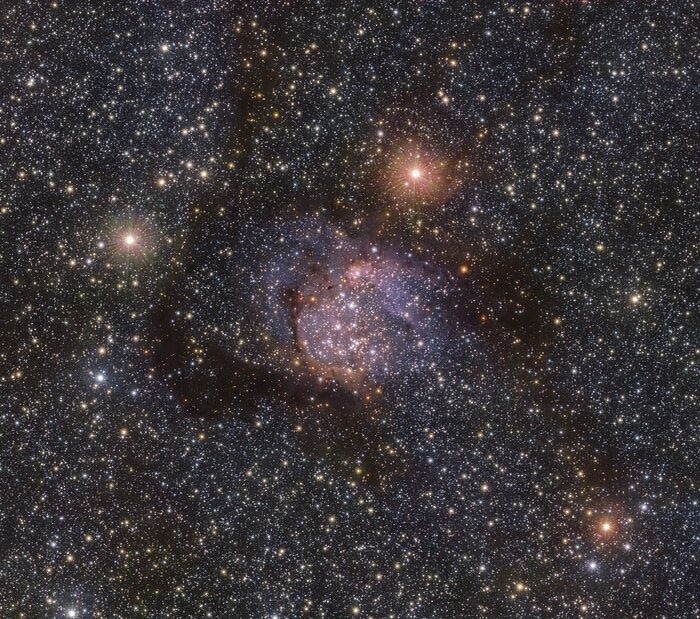A new infrared image shows a multitude of stars hidden behind the faint orange glow of the Sh2-54 nebula. The Visible and Infrared Survey Telescope for Astronomy (VISTA), based at the European Southern Observatory’s Paranal Observatory in Chile, has been used to capture this stunning stellar nursery, which is located in the constellation Serpens, in all its intricate detail.

The Sh2-54 nebula in the infrared with VISTA. Image Credit: European Southern Observatory
The stars appeared in random patterns when our ancestors looked up at the night sky. Due to its resemblance to a snake, the Greeks gave one of these “constellations” the name Serpens. They would not have been able to see the abundance of magnificent astronomical objects that can be found at the end of this constellation.
These include the Eagle, Omega, and Sh2-54 nebulae; the latter of these is shown in this stunning infrared image in a brand-new way.
Stars are created in enormous gas and dust clouds called nebulae. Astronomers have been able to identify and analyze these relatively faint objects in great detail with the help of telescopes. Sh2-54 is the official name of this nebula, which is about 6000 light-years away.
The ‘Sh’ stands for US astronomer Stewart Sharpless, who cataloged more than 300 nebulae in the 1950s.
The understanding of these stellar nurseries by humans is developing at the same rate as the technology used to explore the universe. One of these developments is the capacity to see light other than visible light, such as infrared.
While the dust clouds in nebulae readily absorb visible light, infrared light can almost completely pass through them. As a result, the image here reveals a wealth of stars that were concealed by clouds of dust.
This is especially helpful because it enables researchers to examine what takes place in stellar nurseries in great detail and learn more about how stars are formed.
The sensitive 67-million-pixel camera on ESO’s VISTA telescope at Paranal Observatory in Chile was used to take this infrared image. It was collected as a part of the VISTA Variables in the Via Láctea eXtended survey, or VVVX.
A large area of the Milky Way has been repeatedly observed at infrared wavelengths as part of this multi-year project, providing crucial information about stellar evolution.